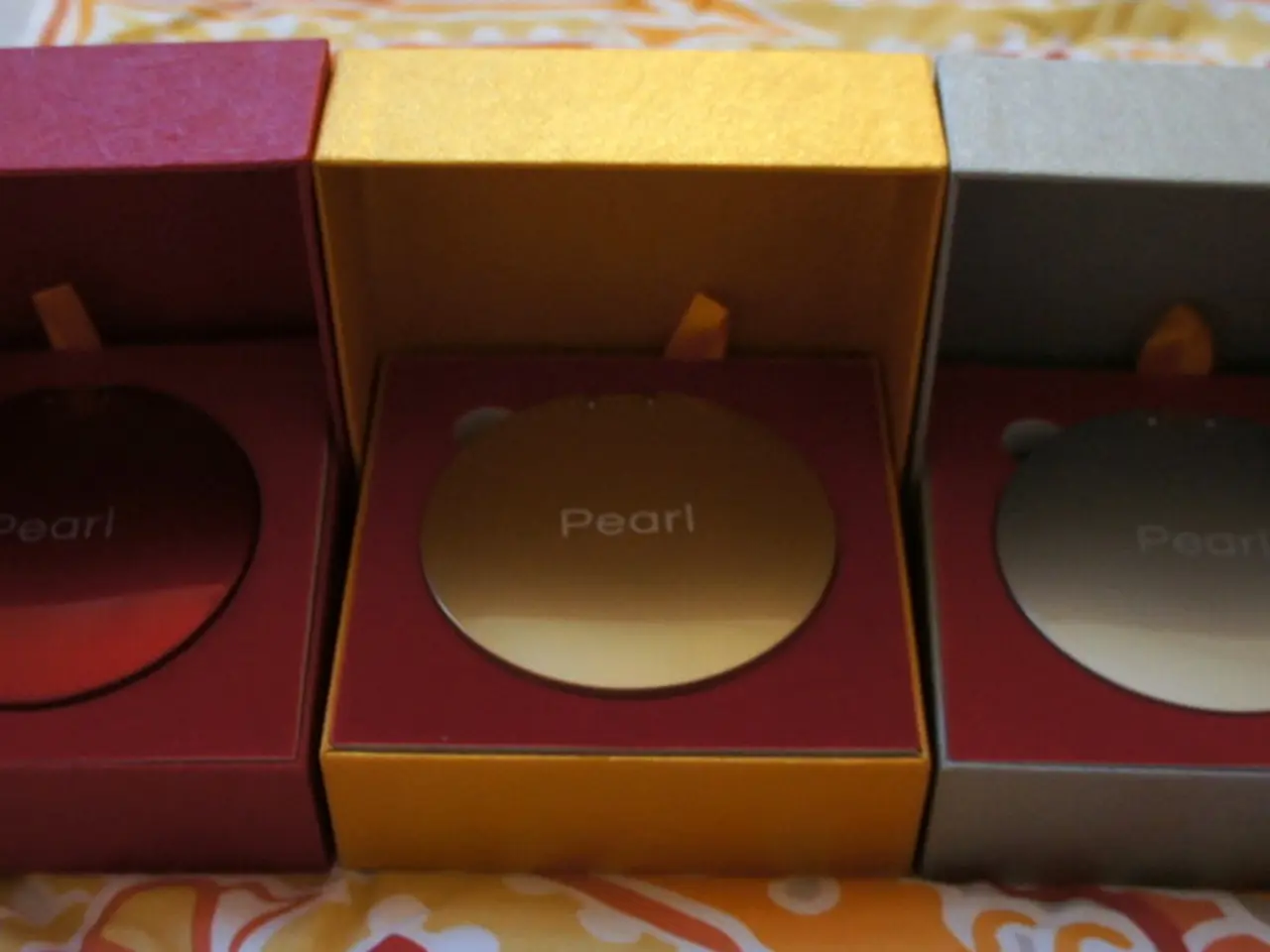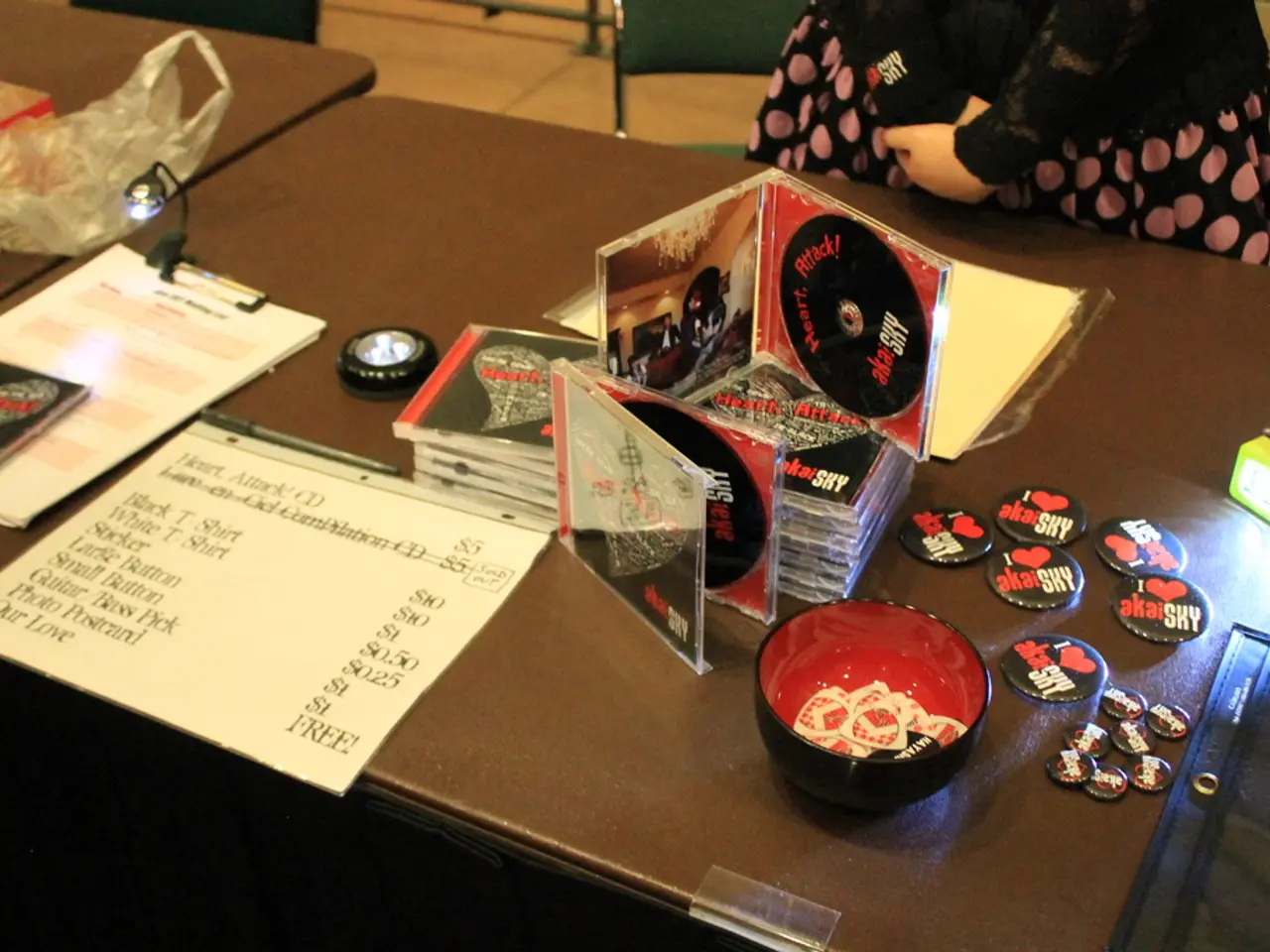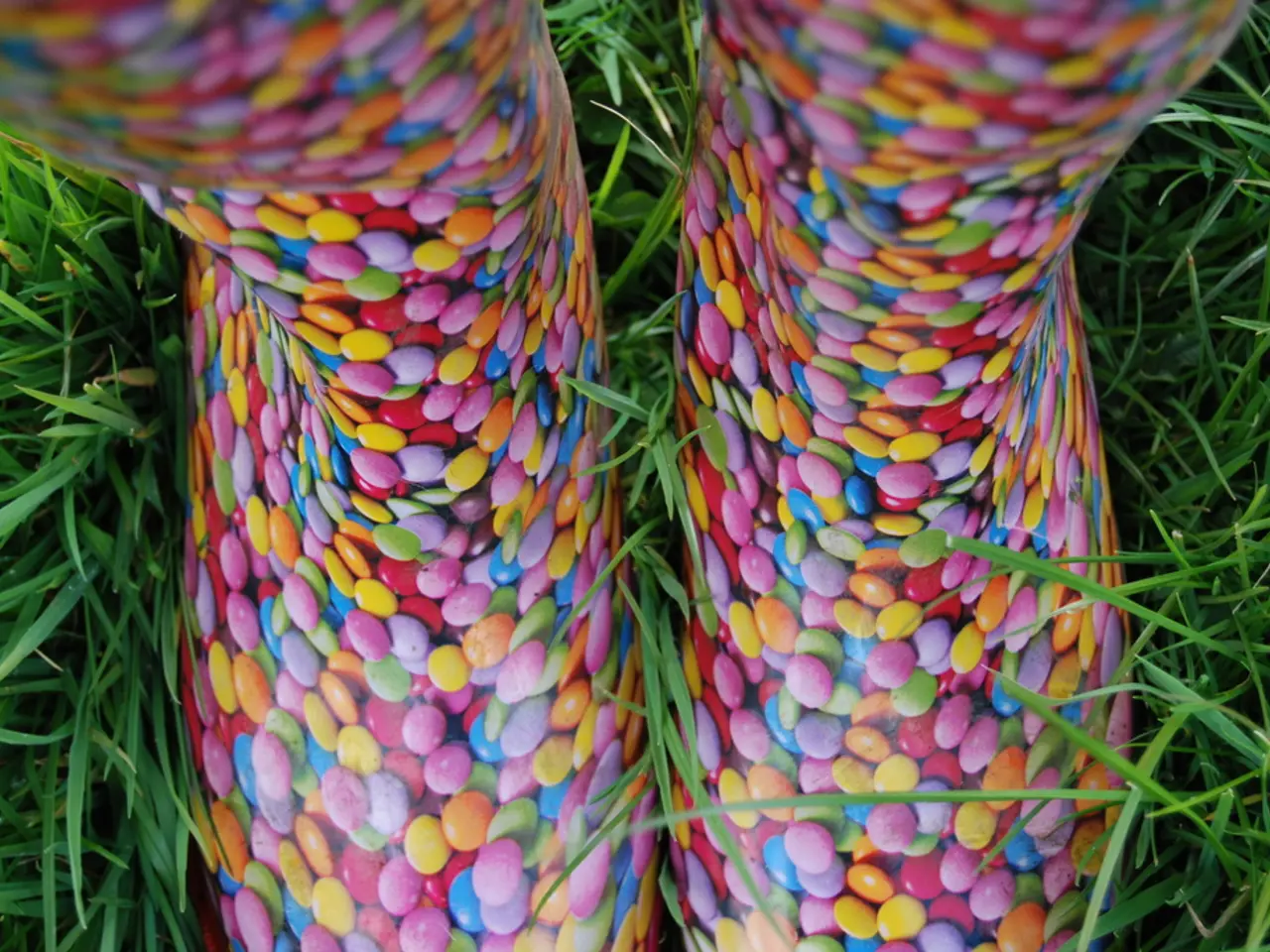Info on Pearls: Values, Costs, and Jewelry Insights
Pearls, prized for their beauty and rarity, are formed in mollusks as a means of self-protection against irritants such as grains of sand, parasites, or foreign objects [1][2][4]. This intricate process involves the mollusk secreting layers of minerals and proteins, primarily calcium carbonate in the form of aragonite, around the irritant. These layers build up in concentric fashion over time, creating a pearl [1].
The material that forms these layers is known as nacre or mother-of-pearl, which consists mostly of crystalline calcium carbonate (95%) and a small percentage of organic substances like conchiolin, peptides, and chitin [1]. Specialized cells in the mollusk’s mantle are responsible for producing nacre, resulting in a pearl with a characteristic smooth, iridescent surface [1].
However, conch pearls are a somewhat different case. They form similarly by layering calcium carbonate around an irritant but do not contain nacre, resulting in a non-iridescent structure with unique optical effects like chatoyancy [3]. Most mollusk pearls, like those from oysters, are nacreous, whereas conch pearls are structurally distinct [3].
Pearls come in various shapes and sizes, each with its unique charm. Round pearls form almost perfect spheres with less than 2% variation in diameter [2]. Semi-round pearls, also called off-round or near-round, represent slightly imperfect spheres with diameter variation between 2% and 5% [5]. Baroque pearls exhibit irregularity in every direction without any rotation axis [6]. They can be subdivided into drop, button, pear, and oval shapes [7].
Grading pearls is a complex process that involves considering both the body color and overtone simultaneously [8]. In the Tahitian pearl grading system, surface quality is categorised into four grades: Quality A pearls are entirely smooth, Quality B pearls are lightly blemished, Quality C pearls are moderately blemished, and Quality D pearls are heavily blemished [9].
Pearl jewelry requires special care to maintain their lustre and longevity. Always put on pearl jewelry last, after perfumes and hairspray, as these products may contain acids and alcohols that can ruin pearls [10]. Never submerge pearl jewelry in soapy water, and instead, wipe them with a damp cloth after wear [11]. Professional testers roll round pearls across a table to determine if they are truly round, while semi-baroque pearls display at least one rotation axis, allowing them to spin on one end like a top [6][7].
Pearl rings and bracelets should have protective settings. If they don't, wear them only occasionally rather than daily [3]. Mabe pearls are created by filling blister pearls and gluing them to a shell backing, while "blister pearls" develop attached to the inside of a mollusk's shell and aren't true pearls [4][12]. "La Paz pearls" originate from coastal waters off Baja California, Mexico, while "Seed pearls" measure less than 2 mm or 1/4 grain, usually with asymmetrical or off-round shapes [13][14].
"Hinge pearls" actually comprise the shell hinges themselves, while "Osmenda pearls" are cabochons cut from chambered nautilus shells [15][16]. "Button pearls" appear round with distinctive flat backs, and "Dust pearls" are too small for jewelry use, typically measuring less than 1 mm or 1/25 grains [17][18].
"Top-grade black pearls feature a green overtone called "peacock green," while "Ceylon" or "Madras" refers to white or cream pearls displaying fancy overtones of green, blue, or purple [19]. "Bombay" describes pearls with cream body color featuring rose overtone, and "Oriental" applies exclusively to natural pearls from the Persian Gulf [20][21].
Never use mechanical systems like ultrasonic or steam to clean pearls, as they are very heat sensitive [22]. The term "French pearl" is a misnomer for a shell piece, and "Half" or "3⁄4 pearls" feature flat backs and usually contain drill holes [23][24].
In conclusion, pearls are a testament to nature's beauty and resilience. Their formation process, despite being rare, results in exquisite gems that have captivated humans for centuries. By understanding the intricacies of pearls, we can appreciate their value and ensure their preservation for future generations.
- Synthetic gems, though not naturally formed like pearls, have made their way into jewelry-making, providing an alternative for those seeking affordable versions of gemstones.
- Education and self-development in gemology is essential for understanding the characteristics, properties, and value of both natural and synthetic gemstones, including pearls.
- At auctions, bidders often vie for the rarest and most exquisite gemstones and birthstones, pearls being among those admired for their natural beauty and rarity.
- When learning about pearls, it's important to know that while pearl jewelry requires special care, various types of pearls come in unique shapes, sizes, and colors, each with its distinct charm.




